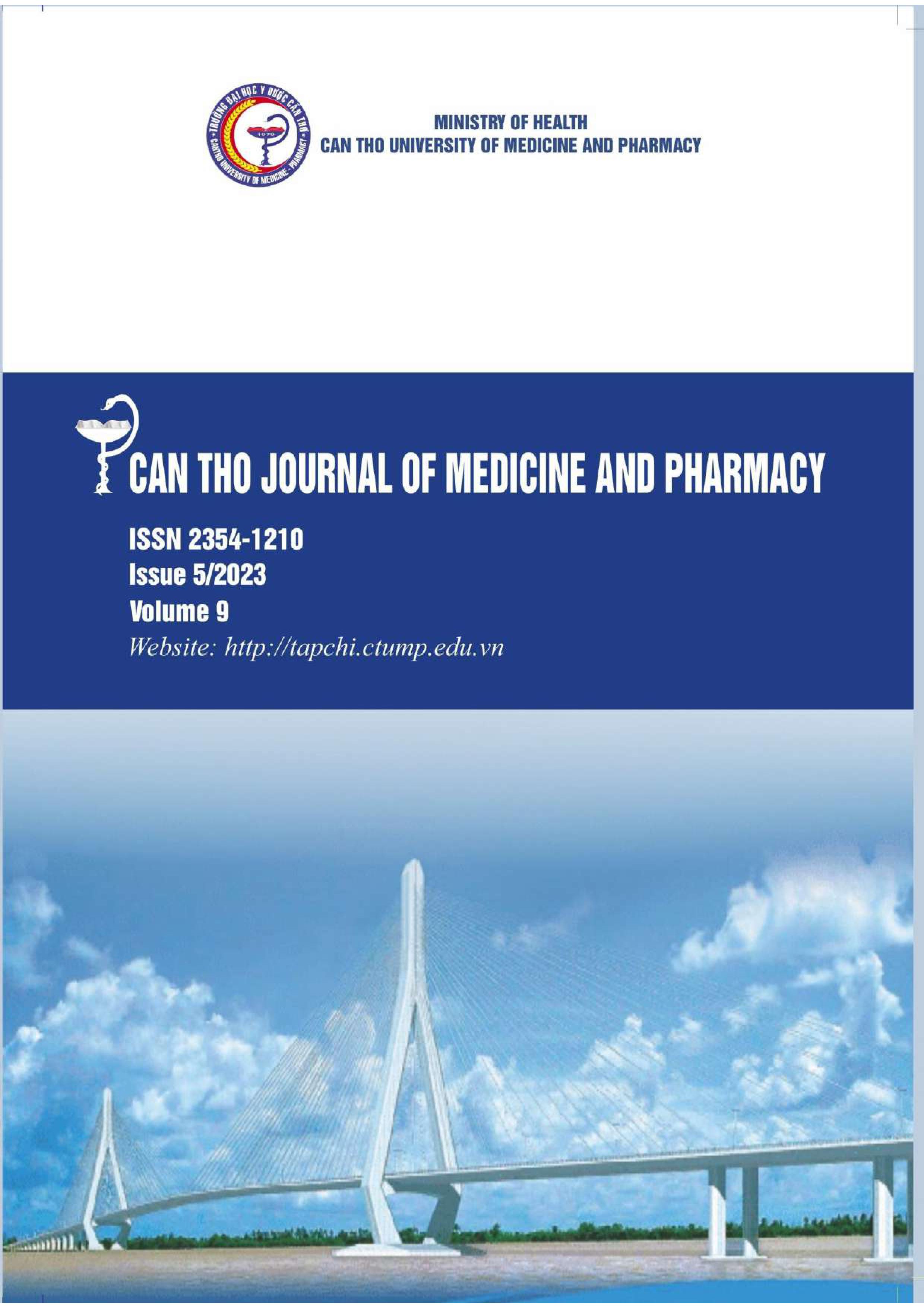RESEARCH ON SOME ANTHROPOMETRIC MEASUREMENTS AND INDEXES OF HIGH SCHOOL STUDENTS IN CAN THO CITY FROM 2019 TO 2021
Nội dung chính của bài viết
Tóm tắt
Background: Anthropometry is a part of physical anthropology, a science that allows the study of measurement methods on the human body and the use of mathematics to analyze the measured results in order to find patterns about human physical development. Measurement of the human body is one of the methods of assessing the general health and nutritional status of an individual or a population. Objectives: to confirm the anthropometric measurements and indexes of high school students in Can Tho city from 2019 to 2021. Materials and methods: a longitudinal section descriptive study in 400 high school students in Can Tho city from September 2019 to September 2021. The sample size was selected according to the cluster sampling method. Results: The growth in weight, vertical height, sitting height in our study was more than the growth over 20 years ago of students in the longitudinal study by Tham Thi Hoang Diep, the difference was statistically significant with p<0.05. The weight of male and female both increased gradually over the years. Compared with the report of Nguyen Phi Hung in Can Tho city in 1999 the average weight, vertical high and sitting high also increased for each age group, the difference was also statistically significant with p<0.01. BMI index of male and female are similar at each age, the difference is not statistically significant with p>0.05. BMI is in the normal range according to the WHO grading scale for ages 5-19. the physical fitness of Vietnamese students is equivalent to that of China, higher than African countries but still lower than other countries in the Europe and America. Compared with the research results of Nguyen Phi Hung and Le Dinh Van more than 20 years ago, our study has a significant growth in length. Lower extremities were at the level of long legs after puberty (statistically significant difference p<0.01 for each age). Conclusions: The anthropometric measurements and indexes of male students are higher than that of female students (p<0.05). The anthropometric measurements and indexes are significantly improved compared to previous studies (p<0.05). Skelie indexes in the study show that children have long to very long legs (from 90 to over 100). Thus, the height growth, mainly the length of the lower limbs, is significantly improved. The physical fitness of Vietnamese students is equivalent to that of China, higher than African countries but still lower than other countries in the Europe and America.
Chi tiết bài viết
Tài liệu tham khảo
2. Al-Sendi A. M., Shetty P., Musaiger A. O. (2003), "Prevalence of overweight and obesity among Bahraini adolescents: a comparison between three different sets of criteria", Eur J Clin Nutr, 57(3), pp. 471-474.
3. Le Dinh Van (2002), Research on the development of physical fitness of 6 - 17 year old students in Thua Thien Hue, Doctoral Thesis in Medicine, University of Medicine and Pharmacy, Ho Chi Minh City.
4. Le Dinh Van, Nguyen Quang Bao Tu (2004), “Research on physical and nutritional status of newly admitted students of Hue University”, Scientific journal, Hue University, Hue city.
5. Le Dinh Van, Truong Dinh Kiet et… (2009), “Factors affecting height, weight, BMI of Vietnamese adolescents”, Journal of Military Medicine, 34 (1), pp. 42 – 47.
6. Nguyen Phi Hung (2000), Report on research results on some anthropometric indicators of ordinary people in Can Tho province, Faculty of Medicine, Dentistry and Pharmacy - Can Tho University, Can Tho City.
7. Nguyen Huu Chinh (1998), “Some anthropometric indicators of residents in An Hai district, Hai Phong city", Proceedings of scientific research, (1), pp. 24-3.
8. Nguyen Quang Quyen (1974), Anthropometry and research applications on Vietnamese people, Medical publisher, Ha Noi.
9. Olfert Melissa D. (2018), "Self-Reported vs. Measured Height, Weight, and BMI in Young Adults", International Journal of Environmental Research and Public Health, pp. 16-22.
10. Ratko P., Ilona M., Kemal I., Mensur V., Daniel S., and Marko J. (2018), "Diferences in Anthropometric Traits and Trend of Changes in High School Students", International Journal of Sport Studies for Health, pp, 1-5.
11. Ratko P., Stanislav D., Marin C.,Mensur V., et al (2015), "The trend of changes of anthropometric characteristics pupils - older school children", Acta Kinesiologica 9, 1, pp. 58-65.
12. Tham Hoang Diep (1992), Morphological and physical characteristics of students at Hanoi junior high school, Thesis of Doctor of Science in Medicine and Pharmacy, Hanoi Medical University, Ha Noi.
13. Tran Viet Cuong (2003), Weight, height of junior high school students and some influencing factors (Long An province - 2003), Master's thesis of Medicine, University of Medicine and Pharmacy, Ho Chi Minh City.
14. Trinh Huu Vach, Le Gia Vinh (1986), “Recommending indexes and scales for classifying body fatness and leanness of adult Vietnamese adults”, Vietnamese Medicine, Medical publisher, 2, pp. 20-26.
15. WHO (2007), “BMI-For-Age Boys 5 to 19 years”, Growth reference 5-19 years, pp. 3-5.
16. WHO (2007), “BMI-For-Age Girls 5 to 19 years”, Growth reference 5-19 years, pp. 3-5.
17. Jing-Jing L., Zhe-Qing Z., Ya-Jun C., Jin-Cheng M., et al. (2016), "Dental caries is negatively correlated with body mass index among 17-19 years old children in Guangzhou, China ", BMC Public Health 16(1), pp. 2-7.


